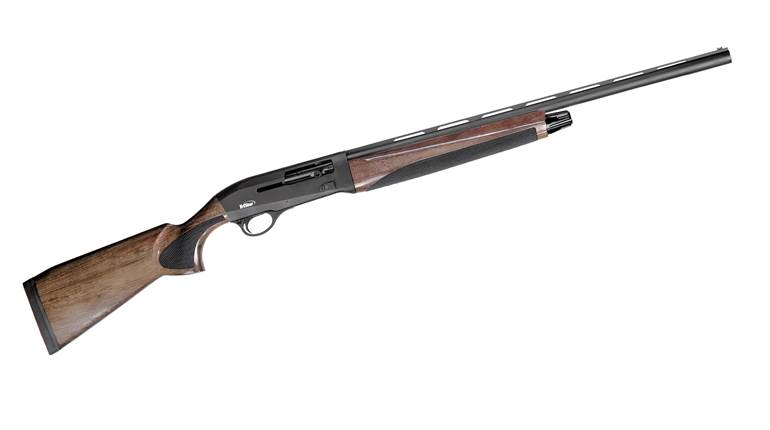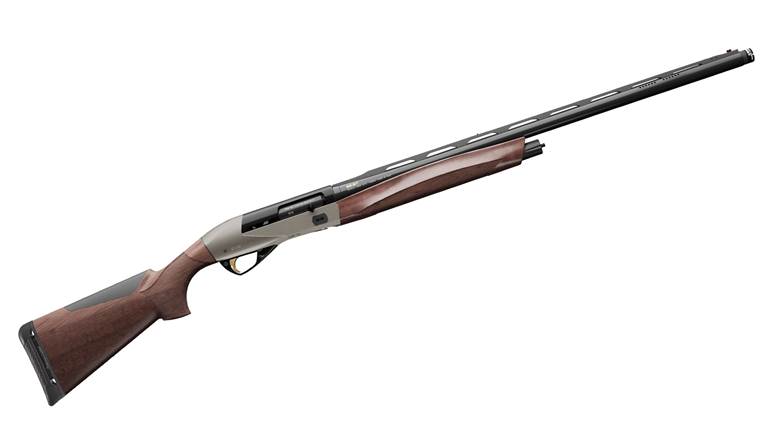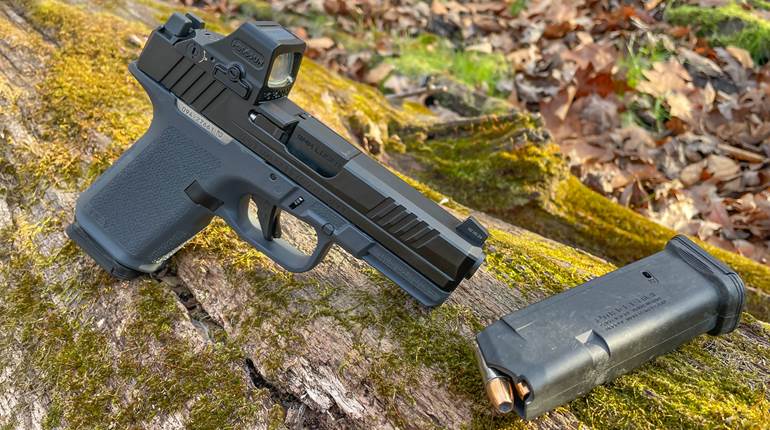
Colt kicked off the 9 mm Luger-chambered AR-15/M16 market when it introduced the Colt SMG in 1982. The SMG made use of a straight blowback action that fired from a closed bolt rather than the M16’s direct-impingement, gas-operated, rotating-bolt system. Three years later, Colt introduced a 16"-barreled semi-automatic model for civilians. By then Olympic Arms had already beaten them to the punch, and the civilian 9 mm AR market was on its way.
ARs chambered for pistol cartridges remained on the fringe of the AR scene, as a cheap-to-shoot alternative to a rifle chambering, until a recent surge in interest in pistol-caliber carbines (PCCs). PCCs have gained so much popularity that they have made their way into the competitive shooting world.
Starting in 2016, many shooting leagues began to introduce PCC classes, which quickly became dominated by AR-platform rifles chambered in pistol cartridges, many of which also feed from handgun magazines. An example of this type of rifle is the recently introduced Rock River Arms R9 Competition BT-9G, a PCC ready for competition straight from the box.
The use of pistol magazines is a recent innovation among pistol-caliber ARs, as early Colt PCCs used an Uzi-derived “stick” magazine. Today, the most popular trend is for manufacturers to make their lower receivers compatible with the ubiquitous Glock pattern of handgun magazines. Besides allowing for the use of a common and inexpensive magazine that is compatible with a popular handgun, it also allows the firearm to have a more streamlined front receiver profile.

The popularity of PCCs in 3 Gun competition caused Rock River to introduce a version of its 9 mm AR-15 called the R9 Competition. Rock River offers two versions of the R9; the LAR-9 model uses Colt-style magazines, while the BT-9G version that we tested uses Glock-compatible magazines. The BT-9G’s billet lower receiver shaves about 9 ozs. off the overall weight of the LAR-9 version, has a flared magazine well for faster reloads and an integrated “winter” trigger guard. The upper has no forward assist and uses an abbreviated dustcover.
The R9 bolt follows the original Colt design. What is the gas key on a traditional AR bolt carrier is merely a point for the charging handle to engage on the 9 mm bolt. Unlike a 5.56 mm bolt carrier assembly with its separate rotating head, the R9 uses a one-piece bolt that resembles a standard AR carrier with a bolt face machined into the front and an extra weight pinned into the back. In total, it weighs 3.2 ozs. more than a standard 5.56 mm bolt carrier group. Inside the receiver extension a 5.5-oz., two-piece, 9 mm Luger-specific buffer helps tame the recoil impulse of the straight blowback design.

The R9 BT-9G’s lower receiver differs in several ways from a standard 5.56 mm AR lower. Three adaptations are made in order to facilitate the use of pistol magazines. First, the magazine well is machined to accommodate the size and feed angle of the pistol magazine. Second, because the magazine catch cut-out on pistol magazines is in the front (versus the side on a standard AR magazine), the magazine release button is in its typical position, but the actual catch must cantilever to the front of the receiver to reach the pistol magazine’s catch cut.
Third, Glock magazines are set up for the front edge of the follower to engage the slide lock, versus the rear edge of the follower that engages the bolt catch in 5.56 mm AR magazines. Rock River overcomes this problem with a patent-pending solution—a small bar is tripped by the pistol magazine follower in the front and raises up a 5.56 mm-type bolt catch in the rear. These designs allow for controls in the standard AR positions, with a left-side safety lever and bolt release, and a right-side button magazine release. Pistol versions of the BT-9G with an arm brace are available in 4.5"-, 7"- and 10.5"-barrel lengths.
The R9 Competition’s 16" barrel is chrome-moly steel, with the muzzle threaded 1/2x36 TPI and capped with Rock River’s breacher-style “mini-brake.” It is almost enclosed by a lightweight, 15", free-floating handguard with M-Lok-compatible slots. There is a 23⁄8" section of Picatinny rail on the top front of the handguard for the mounting of an iron sight, and a 13/4" section at the rear that mates up with the standard AR flattop receiver rail. No sights are supplied from the factory.
The R9 Competition is outfitted with Rock River’s Operator telescoping stock that uses a commercial-spec, six-position receiver extension. The stock has an enhanced cheek-weld area, a rubber buttpad, two waterproof battery storage compartments and Magpul-compatible QD swivel sockets. The pistol grip is a Hogue overmolded rubber model.

We mounted a Vortex Strike Eagle 1-6X 24 mm scope to evaluate the rifle on the range. Groups stayed just under 2.5" at 50 yds. with all types of ammunition we tried. A great aid in accomplishing this was the factory trigger. The two-stage trigger broke crisply at 4 lbs. and had a short reset. The R9 BT-9G functioned with every type of Glock magazine we tried, including the supplied 17-round ETS magazine, Magpul Glock PMAGs, and factory Glock magazines ranging in capacity from 10 to 33 rounds.
The gun ships from the factory in a hard case. Add iron sights or the optic of your choice, and it’s ready to ring steel. Melding elements of the traditional Colt 9 mm Luger AR design with accommodations for using Glock handgun magazines, all while retaining the full functionality of the AR platform, the BT-9G is a PCC ready to take on the competition.






































